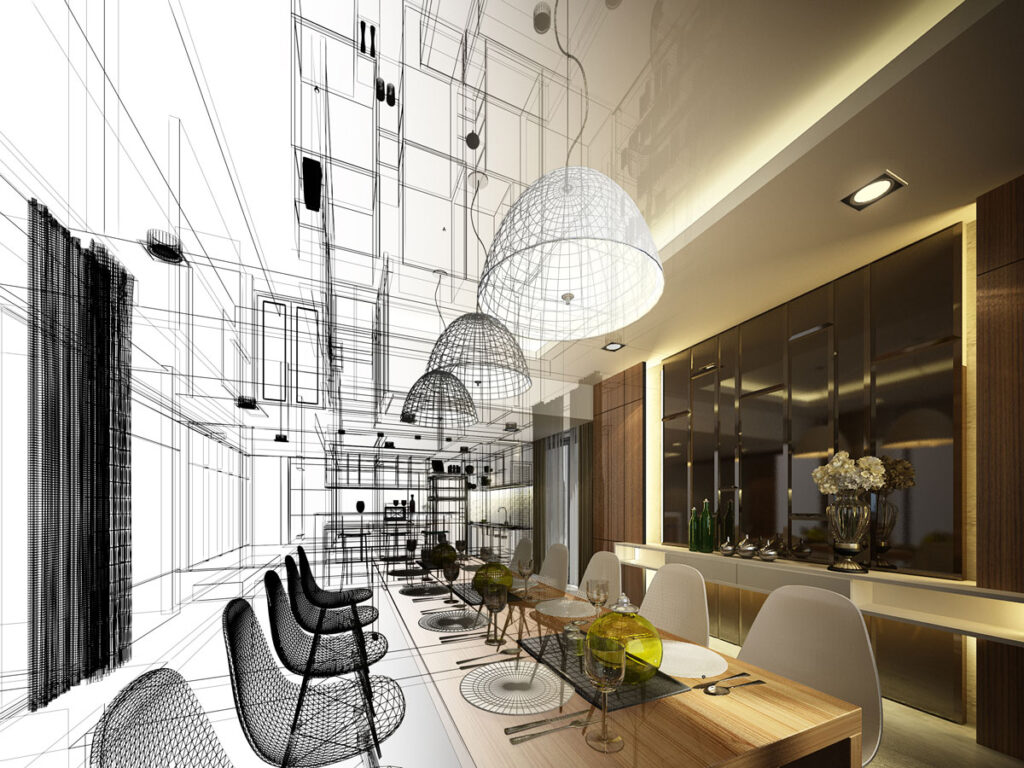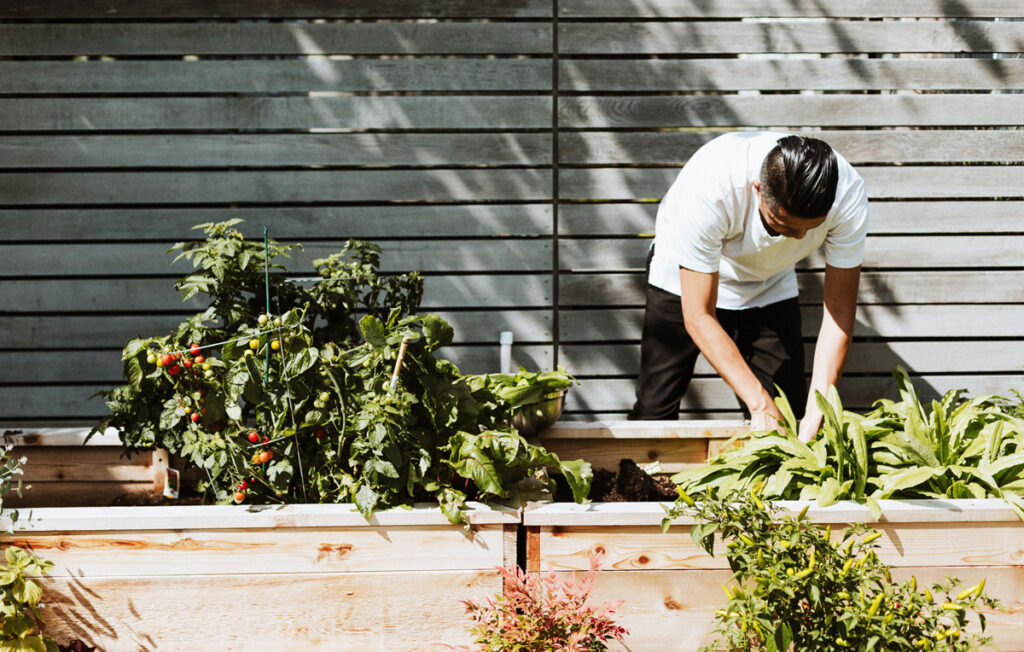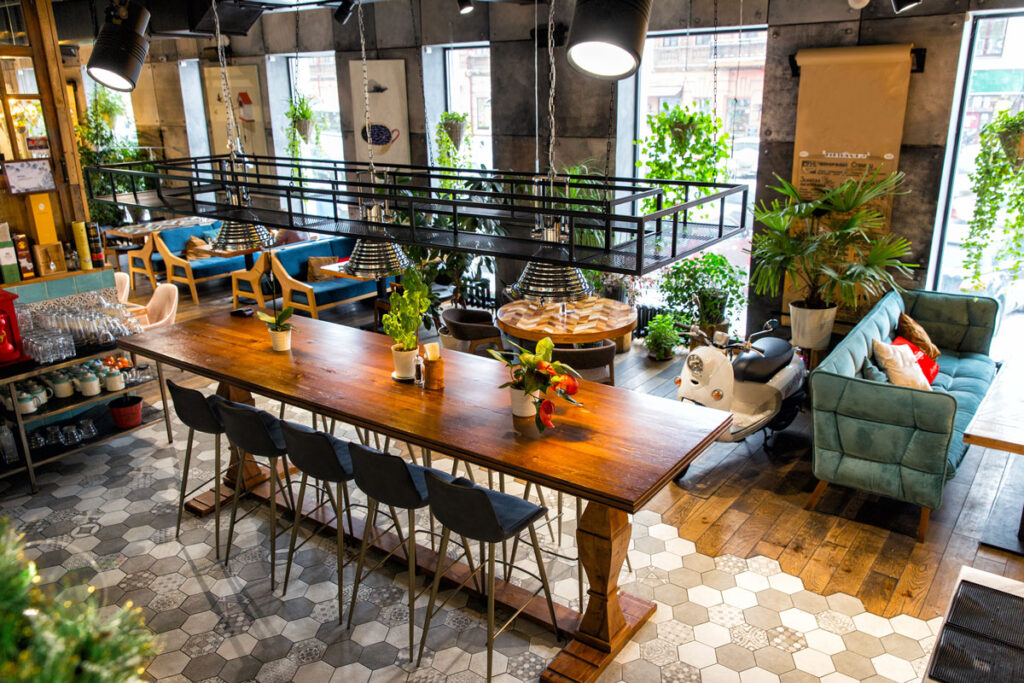Modern eateries are done with disposable everything and the endless cycle of waste. While businesses of all kinds are turning sustainability into a competitive advantage, restaurants are turning to circular design—the practice of creating durable, reusable, repairable and recyclable products that generate zero waste in support of a circular economy.
Circular design has emerged as a savvy, strategic choice for restaurants looking to stay relevant and make a meaningful impact. Both function and aesthetics are critical in restaurant design—but innovation and sustainability are the true recipe for success in the rapidly evolving restaurant industry.

How Can Restaurants Repurpose Waste?
Restaurants choosing to repurpose waste not only helps reduce environmental impact and operating costs, but also enhance the restaurant’s brand image through an actionable commitment to sustainability. Common ways to repurpose waste include:
Upcycled Decor and Furniture
Restaurants can make a dramatic impact in their carbon footprint simply by choosing to use repurposed furniture. Reclaimed wood, pallets, or discarded materials can be used to create unique furniture, tables, chairs, and decorative elements within the restaurant. A restaurant in Sweden uses furniture made from food waste, creating a visible example of how circular design benefits everyone.
The recommerce industry has flourished over the last few years. This is attributed to rising inflation as well as consumer and market trends such as sustainable shopping and supply shortages driven by the pandemic. Next-gen consumers accept the idea of secondhand, applaud, and seek it out across a wide product spectrum.
- The Robin Report
Sustainable Building Materials
Incorporating sustainable building materials like recycled glass, reclaimed bricks, or reclaimed metal into the restaurant’s design and construction creates a distinctive aesthetic that can enhance the restaurant’s ambiance. A great example of using sustainable building materials is Mo de Movimiento in Madrid, Spain. The restaurant is constructed from upcycled materials, including rubble that’s been reprocessed into tiles.
“Countless restaurants call themselves sustainable, but the hospitality industry is notorious for greenwashing: An heirloom tomato and biodegradable fork do not make for a sustainable restaurant. But Mo checks out. The pizza ovens are jerry-rigged so that their exhaust heats the space in the winter, while water-filled clay tinajas (jugs) dangling from the ceiling are fitted with cooling elements for energy-efficient air conditioning in the summer.
Virtually all the furniture, fixtures, and decoration—from the chairs to the tables to the servers’ uniforms—is made from recycled materials. The massive fluorescent light fixtures? Salvaged from parking garages. The tapestries that hang in the patio? Woven from the discarded wool of Basque latxa sheep. The tabletops? Fashioned out of the pulverized rubble of the Teatro de Espronceda, Mo’s predecessor.” – Conde Naste Traveler

On Premise Food Growing
Restaurant Ultima in Helsinki grows their own mushrooms in recycled coffee grounds. They also have a hydroponic garden in which they grow their own herbs and potatoes.
“Our ethos is based on sustainability and circular economy—without forgetting fantastic flavors and high-quality ingredients. We want to save natural resources for the future generations, too, and create an enjoyable dining experience with minimum waste.” Saana Harjula, restaurant manager, in an interview with Scan Magazine.
Helsinki seems to give rise to restaurants that embrace circular design. Three other restaurants in the city besides Ultima have been recognized for their efforts in sustainability.
- Restaurant Nolla operates with zero waste. They have eliminated single-use plastics and packaging. They compost all organic waste and recycle all other materials.
- Loop uses a closed-loop system for food production. They grow their own vegetables and herbs on-site using hydroponics and aquaponics systems.
- The now-shuttered Restaurant Neste had implemented a circular model for food production by using renewable energy sources and recycled materials.

Transforming Waste into Resources
There are some exciting changes in the sustainable building of restaurants already in progress, with companies recognizing the importance of embracing restaurant sustainability practices. For example, an India-based start-up, Craste, transforms waste into high-quality packaging paper that emits no harsh chemicals and uses less water than conventional methods. And a Dutch company, CoolBricks, presses and sundried cow dung, soil, and agricultural waste into architectural bricks. The bricks are 20% stronger, 50% cheaper, and produce 90% fewer emissions than traditional bricks, and can be recycled or used as fertilizer at end of life.
Another company leading the way in circular design is Object Space Place.
- By applying the principles of circular design with Apricity, a London-based restaurant, they achieved a 41% reduction in carbon footprint.
- For Kindle, a sustainable restaurant in Cardiff, they repurposed an existing building using elements of the existing structure to design the restaurant.
- While working with Gail’s, they repurposed chairs from one store by refurbishing them to use in another as the restaurant added new locations.
Greening Restaurant Spaces
According to Stylus, greener architecture is the number one priority for hospitality operators as the climate crisis looms larger and consumers want to spend time in low-impact spaces. Inspired by the principles of regeneration, zero waste, and Earth’s natural materials, restaurants are incorporating circular design principles and integrating sustainable materials, energy efficiency, and nature-inspired designs.
Circular design aims to create a more sustainable and environmentally friendly approach to production and consumption. It not only reduces the environmental impact of products but can also lead to cost savings for businesses by reducing the need for new raw materials and lowering waste disposal costs. Additionally, it encourages a shift toward a more regenerative and restorative approach to the economy, where resources are conserved and reused, rather than depleted and discarded.
What About America?
You may have noticed our examples of good progress have all been non-U.S. restaurants. According to a recent report by the World Wildlife Fund, America ranks 15th out of 25 countries in terms of circular economy performance. The report highlights the low rate of recycling and composting in the U.S. America is lagging behind other countries when it comes to prioritizing sustainable dining, but there are plenty of restaurants serving up delectable meals with a commitment to sustainability. Through practices like biodynamic farming, composting food scraps, and the use of hyper-local ingredients, sustainable gastronomy is in fact growing in the U.S. But as with most progress, there’s still more work to be done.





